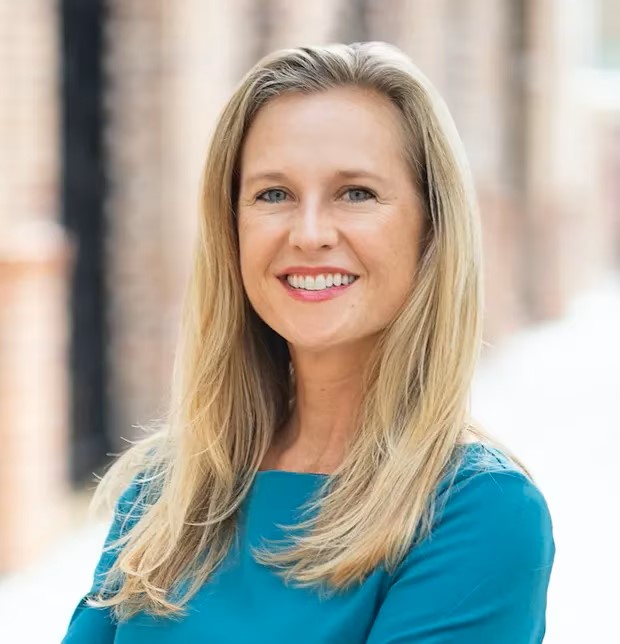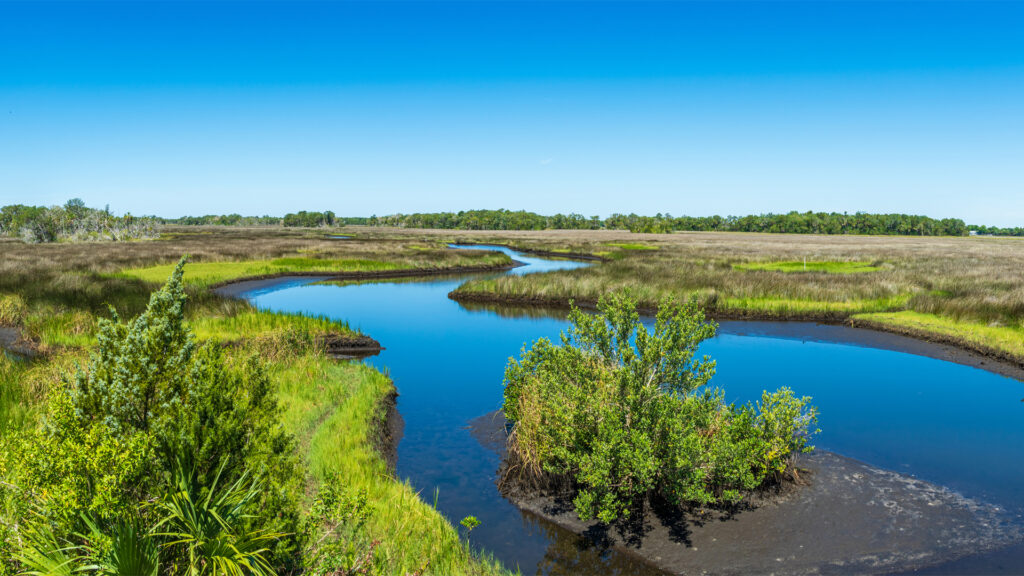By Bella Kubach, The Invading Sea
The following Q&A was conducted with Rep. Lindsay Cross of Florida House District 60, which covers parts of St. Petersburg and eastern Pinellas County. Since she was elected in 2022, she has sponsored multiple bills involving Florida’s water quality and other environmental concerns. This interview has been edited for length and clarity.
You’ve been in office since 2022 and now you’re running for reelection. How did you use your background in environmental science to enter the political sphere? How do these two interests coincide?

My career started at an organization called the Tampa Bay Estuary Program. I was there for 14 years, and that organization works collaboratively at all levels of government and with academic, for profit and nonprofit organizations to develop actions that will help to protect and restore the Tampa Bay Estuary. I found very early on in my time with them how important it was for scientists to be able to communicate their results with decision makers and people involved with policy.
My interest in running for public office came from my experience dealing with lawmakers at the local and state level and working to provide better information for them. They would support decisions that would lead to better water quality and protection or restoration of habitats. I saw that there was a big need for people with scientific backgrounds to step into political roles because so many of the challenges that we’re facing are rooted in science. When you think about climate change, water quality and things related to public health, having an understanding of science is really instrumental in making the best decisions for our state and our country.
What climate-related legislation are you currently working on?
I have a bill related to carbon sequestration and it’s House Bill 1187. It would set up a task force that would begin to look at the role that natural and agricultural lands and waters play in storing carbon from the atmosphere.
We know that plants take carbon from the air or from the water during the process of photosynthesis and actually integrate some of it into their plant biomass, into their roots and into the soils that they’re rooted in. They actually have the ability to store that carbon. They take some of that carbon from the water or from the air and store it, so that carbon is not contributing to some of the warming of our planet and some of the climate change impacts we’re seeing.
This task force would include multiple stakeholders with knowledge and experience in agriculture and aquaculture, working lands like cattle ranches, conservation, people involved in restoring estuaries and people in the energy or resilience space. … (They) would begin to evaluate these different habitats and coastal uses that we have, and better understand how they’re able to store carbon. … (They would) set some goals to improve their efficiency or effectiveness in storing carbon, and look at some potential funding mechanisms. … (That) could include a carbon market to incentivize landowners and aquaculture and agriculture to continue doing some of these practices we know are good for supporting our food supply, our water supply, providing habitat for fish and wildlife and, as an extra bonus, storing carbon.
You’re participating in FAU’s Frontiers in Science panel discussion on wildlife corridors next week. Can you share a little bit on what you plan to discuss then?

The Florida Wildlife Corridor is such a perfect example of a vision for conservation and a model of collaboration by looking at the various ecosystem benefits of protected areas and working landscapes. Having a connected corridor and having places that have abundant fish and wildlife is really essential for us as a state. We value many of the wildlife species that we have in our state, but we also know that having places for people to go outside and recreate is good for our health and it’s good for our mental well-being. A lot of these areas are critical in protecting our fresh drinking water supply and providing agricultural commodities that we need.
The corridor also improves our resilience as a state because natural lands do not produce as much pollution or runoff on them, so they’re helping to replenish our aquifer. When we’re able to protect coastal environments like seagrasses and mangroves, that’s minimizing impacts from storms and hurricanes. Having protected natural areas is helping Florida to be more resilient.
Having a cohesive vision through the wildlife corridor means that it’s something that has been embraced, not only by the public, but by lawmakers and legislative leaders. In recent years, we’ve seen some phenomenal progress on protection and restoration of the corridor. I think it’s one of the most important initiatives that we have right now for our water supply, our food supply, our wildlife and our resilience.
What do you see that Florida’s biggest problem is environmentally speaking? What are you planning to do to try to combat that?
I think issues around climate are what are going to be the most impactful in a negative way on our state. I would like to see us set renewable energy goals as a state and work towards being less reliant on fossil fuels. That’s something that hasn’t had any traction lately, but that is certainly something that we need to be doing.
My carbon sequestration bill is another way to look at the connection between having healthy terrestrial and aquatic habitats and mitigating some of those impacts from climate.
Why is it important for lawmakers to care about climate change?
Well, we’re already seeing the negative impact of sea-level rise, flooding, stronger storms and hurricanes. In my district in the St. Petersburg area, we have several neighborhoods that have repetitive flooding issues, homes that were flooded during Idalia and then again in December when we had a strong rain event. Those problems are only going to get worse and it’s very costly for our state. It’s incredibly disruptive for the people that live there.
We need to be making investments in resiliency and adaptation measures, but we also need to be chipping away at the reasons that are causing these problems. That means making it easier for people to have solar on their homes and businesses, transitioning to more electric vehicles and renewable energy both at the municipal and kind of the business level.
I’m also working closely with leaders at the city of St. Petersburg and my federal representative, Congresswoman Kathy Castor. We’re looking at initiatives that can reduce flooding in some of our communities. We’re also starting to have conversations about where we should and shouldn’t develop … if places are experiencing repetitive flooding.
This Q&A was conducted by Bella Kubach, a Florida Atlantic University senior majoring in multimedia journalism who is reporting for The Invading Sea during the spring 2024 semester.
Sign up for The Invading Sea newsletter by visiting here. If you are interested in submitting an opinion piece to The Invading Sea, email Editor Nathan Crabbe at ncrabbe@fau.edu.



